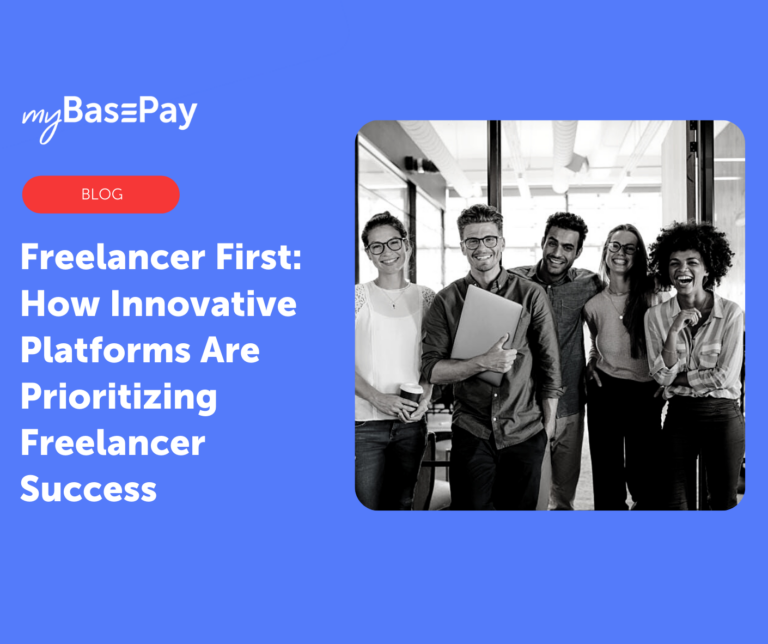How an Agile Workforce Helps Businesses Navigate Uncertain Economic Times
The global pandemic has redefined the term “uncertainty.” Companies all over the world had to suddenly adapt to overwhelmingly unprecedented levels of changeable events. Shipping delays, logistical disruptions, and material and labor shortages were just a few crises that caught business leaders off guard.
As a consequence, these events led many to discover just how unprepared they were for uncertain economic periods — emphasizing the importance of developing an agile workforce.
Today, the global recession is the newest looming threat, and companies are already preparing for an economic decline. Talent supply shortages have already thrown recruiters and hiring managers into a loop. Now, employers need to be ready for yet another massive workforce adjustment.
Though planning and budgeting for an agile workforce can be chaotic, its rewards are building a workforce that can adapt and withstand economic downturns — enabling your business to become more flexible, resilient, and innovative, particularly in the face of uncertainty.
Shifting From Financial Precision to Strategic Success
As the planning and budgeting seasons kick off, most companies will be targeting financial goals and spending policies. On average, most businesses’ final budget submission is 20% too high than the company can afford. At this point, a company’s chief financial officer will conduct further analysis to determine the most important investments, then make some painful budget cuts.
And while this might look good on paper, the following reality rarely turns out that way.
To develop a more agile approach, companies should focus and target these financial goals into a strategic list of guidelines that serve as the driving force behind the budgeting and adaptation strategy. So, instead of allocating resources from each individual project upwards, these guidelines force discussions that distribute resources from the strategy down.
This process can help point out surprising patterns that would have otherwise been overlooked For example, executives might realize that their greatest growth opportunity may end up being a considerable market share loss. Or, they may notice that too much of the tech budget is being allocated towards simply keeping the lights on and updating old systems.
Whatever the realization may be, this strategic approach can help companies better see trade-offs that maybe aren’t as efficient as they previously thought, either due to neglect or poor decision-making. Especially in economic times of turbulence, it becomes even more crucial to catch these errors and make the proper adjustments to maintain agility.
Prioritizing a ‘Skills-First’ Mindset
The most successful companies during uncertain economic periods are those that assess their talent based on adaptable skill sets. As a business leader, it’s critical to have a clear picture of the required work during variable economic times.
This skill-first mindset not only ensures that you understand which gaps need to be filled but also which skills you already have internally that can be further developed. With up-to-date skills data, organizations can access this information, which helps them adapt quickly and efficiently when the business needs change.
Particularly for HR and recruitment teams, understanding opportunities to fill talent gaps internally can save big on time, energy, and money. In this way, the data acts as the hiring department’s single source of truth.
According to LinkedIn, more than 40% of company leaders who hire on the platform use skills to fill open roles. Further research shows that those employers are 60% more likely to find a successful hire than those who aren’t using a skills-first approach.
Candidates who offer knowledge and experience are undoubtedly valuable, but a skill-focused hiring approach provides greater room for agility and progress. As your company demands evolve and change, so can the skill-sets of your workforce.
Staying Onboard With New Technology
Physical planning and well-thought-out talent strategies are certainly keys to workforce agility planning. However, without the right digital tools and resources to execute your strategy, your plans become significantly more difficult to achieve. Building an agile workforce demands efficiency, and there’s no better way to increase that than technology.
With advancements in areas like AI and automation, organizations can obtain a real-time view of the skills within their workforce, and pinpoint areas where they’re most needed. This allows for faster, more precise hiring and onboarding, as well as better collaboration between recruitment teams.
The added benefit is that doing so also ensures the company stays innovative, even during choppy economic periods. Commitment to digital innovation can help organizations identify shortfalls and further strategize how to advance the business and modernize other processes.
Several surveys of small to mid-size businesses show that ensuring their tech investments are reliable helps them stay adaptive during shifting economic periods, even going on to yield better ROI.
What does this mean for your business today? To consistently deliver new applications and capabilities to your company, it’s wise to start inspecting your current technology and research new technologies that can breathe new life into your workforce.
With the right tech solutions, your company can anticipate talent needs, allowing you to build more sustainable talent pipelines that help you hire top talent on demand, whatever the economic storm.
Establishing an Internal Mobility Plan
Internal mobility has never been more important. Even before the global lockdown, developing internal talent mobility strategies was rising to prominence. Now, with the global recession looming, companies are being pushed to look inward and discover new, existing talent.
Internal mobility simply refers to the movement of employees within an organization, both vertically and laterally. This essentially offers employees to change roles and take advantage of new career opportunities within the company.
The benefits of this strategy are twofold. While it allows companies to repurpose top talent with their organizations, it also cuts back significantly on hiring costs and reduces the financial burden on the company.
Particularly during times of economic turmoil, cutting hiring costs is critical to staying afloat. Internal hiring costs are considerably less than sourcing externally, with companies saving as much as 20% through internal recruitment.
With an internal mobility strategy, you can fill these open roles quicker and more effectively with an existing pool of candidates to draw from. Especially if you’ve taken a skills-first approach, you should be able to rest easy knowing your workforce already has the required skills to stay agile during shifting economic periods.
Author: Cesar Jimenez, myBasePay CEO
Cesar A. Jimenez is an entrepreneur, investor, and military veteran with over 25 years of staffing industry expertise successfully leading technology staffing organizations. His expertise in the IT industry allows him to use his experience as a thought leader for talent acquisition, staffing, IT, and recruitment technologies with a passion for contingent workforce solutions. Cesar has held various leadership roles for both a global staffing organization and technology solutions companies. This expertise has enabled him to develop alternative workforce models that provide the agility for organizations to be competitive in today’s marketplace. In his spare time, he enjoys spending time with hisfamily, working out, and coaching high school baseball players.






